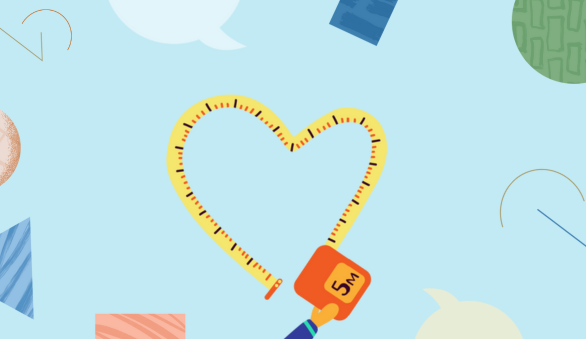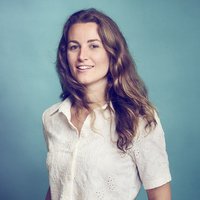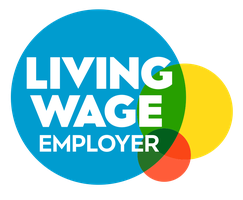Measuring impact: It’s not just a numbers game

In April 2025, Place Matters hosted a webinar in collaboration with the Old Fire Station. Together, we explored a key tension faced by community organisations and funders: traditional evaluation methods are time-consuming, extractive, and often disconnected from the lived realities of communities.
Yet how can we measure complex, place-based systems change in a way that reflects the true experience of those impacted by the work?
A story of saying “No”
In what was a lively and engaging session, Jeremy Spafford, Director of the Old Fire Station, shared a story that set a tone of hope for the discussions: The Old Fire Station was asked to measure participants’ loneliness before and after a series of creative workshops. This felt intrusive and completely undermined the very relationships the project aimed to nurture. So the team pushed back. To their surprise, the request was passed up the chain from funder, to the Council, up and up, until eventually, the requirement was dropped. Everyone agreed, it didn’t make sense. Jeremy reflected: “It is about us trying to find a way to be brave and just say 'No.'”
Not every organisation can take that risk. But the story shows that change begins with courage, with asking whether the systems we uphold are fit for purpose, and what can be done differently. This piece reflects the key insights shared during our session, and shares the details of a search for a better solution.
When the system becomes the work
One of the clearest frustrations shared during the session was how often measurement processes consume precious time and resources. Jeremy explained: “The forms that we stick under people's noses are intrusive and actually distract us from and undermine the relationships we're trying to build... Staff themselves hate doing it, and it isn't intrinsic to the work.”
Participants shared their frustrations during the session. Traditional reporting methods, especially overreliance on numbers, often “don’t tell the story.” Organisations feel pressured to fit their work into rigid frameworks, even when those frameworks fail to reflect the nuance of what actually happened.
The Old Fire Station, an arts centre far from typical, is a perfect example of this. As well as performances, exhibitions, festivals and workshops, it cohabits with the homeless charity Crisis. This unique environment is a place where artists, volunteers, and staff share spaces with people seeking support for some of life’s most difficult challenges. But trying to capture that experience with numbers and tick boxes, just doesn’t fit. Jeremy shared “I might say to a funder... we work with 105 people who experience homelessness. … But at the end of the year, I know that only 80 of them just touched the project from a distance. Another 20 had a really strong experience, and five of them had a completely transformative experience. But that number 105 doesn't tell you any of that.”
The challenge isn’t dishonesty—it’s that a system obsessed with scale and certainty can’t measure the work required to balance relationships, unpredictable outcomes and complexity.
A different approach
In response, the Old Fire Station adopted a storytelling method: a rigorous, reflective, collaborative method, developed alongside trusted story collectors and grounded in co-creation with the communities closest to the work. It is a learning experience.
Sarah Cassidy, Head of Inclusion and Learning, explained: “Storytelling involves collecting stories from people about their experience of a project, and then bringing people together to discuss those stories and think about the learning that's emerging.”
Story collectors record and transcribe conversations with participants: what changed for them, how, and why it mattered. They are then shaped into first-person narratives and approved by the storytellers themselves. These stories are reviewed together at a community wide event where the stories that most accurately describe the impact of the work are chosen to go into the final evaluation report, and reflections are made on what can be adapted going forward.
“It’s collaborative, reflective, creative. It helps us learn better… and centre those closest to the work,” Sarah shared.
Whilst both Jeremy and Sarah are adamant to stress that they did not “invent storytelling”, their work has been to put a logical, ethical method to the practice. One that can be understood, and most importantly, recognised by funders and stakeholders.
Measuring for learning, not just proof
The webinar called for a shift from measurement for accountability to measurement for learning.
Too often, organisations are expected to prove their work has “worked”. Yet this requirement leaves no space for experimentation or learning, which, ironically, leads to improved outcomes.
This work requires time, patience and experimentation. As Jeremy put it; “We need to make it okay to fail … to take risks, to learn from mistakes, to be able to adapt.”
Storytelling supports this shift. It invites reflection, both on an individual and a group level, through its multiple layers of co-creation. It fosters a learning culture, where staff and participants can explore the complexity of their work in a supported environment.
The funders’ role (and responsibility)
A promising part of the session was hearing from funders who joined the session, they shared their own frustrations with data- and report-heavy processes. These inherited methods don’t really help them understand the impact of the work.
Jeremy noted that when the Old Fire Station shared storytelling-based reports, “The feedback we got… was that it was the first time [funders] actually understood what difference the money made.”
Still, challenges remain. Many funders continue to require statistics, even when open to stories. There is a risk of it becoming a requirement on top of traditional methods. Jeremy stressed the need for a shift in culture. It requires intentional effort from funders to support organisations to use alternative methods, to resource learning properly, and to be open to evidence that looks and feels different.
While some funders are making this shift, it must become more widespread. During our breakout sessions, one group quite rightly asked: “How do we champion the funders already doing this well?”. The challenge is to turn these bright spots of innovative thinking into border practice.
Remaining tensions and questions:
Whilst the session ended with a sense of solidarity, it also surfaced some tough and unresolved questions:
- How do we connect short-term stories with long-term change?
- Stories are snapshots, we need to know if the change sustains.
- What about voices of dissent?
- Whilst Sarah stressed the importance of setting the scene for negative feelings to come up, we need to create space for people who feel excluded.
- How can stories become trusted forms of evidence and influence systemic change?
- We need to shift stories from being “soft” forms of evidence, and take the lived experience of participants seriously.
Sarah and Jeremy both humbly acknowledged that storytelling is not a complete solution. The Old Fire Station continues to reflect on how to include more voices, use stories responsibly, and support smaller organisations to build a learning culture through their training programmes.
Conclusion: Storytelling as practice, not performance
Amongst many takeaways from the Measuring with Value webinar, what stood out is this: evaluation doesn’t have to be a burden, it can be a practice of care for the community and ongoing learning and improvement. Whilst stories do not replace all data, they help us to ask better questions, and in turn get better answers. It makes space for the kind of knowledge that counts, not just that which is countable.
As Sarah gently put: “Storytelling starts from a place of just two people sitting down in the room, having a conversation, and listening. And that’s kind of beautifully simple.”
Explore more:
Visit the Old Fire Station’s storytelling website to read real stories, access toolkits, and learn more about their training and bespoke consultancy services.
Join the conversation:
What would you measure differently if you didn’t have to prove anything?
You can add your thoughts to our Community Learning Miro Board, used during the session, password: community
Make sure you sign up to receive Place Matters Community Learning Events via our Newsletter, here.

